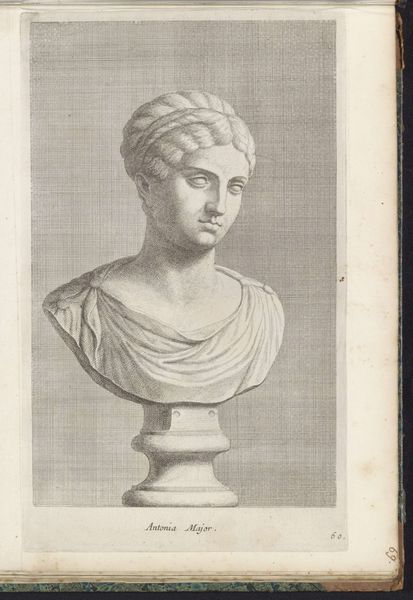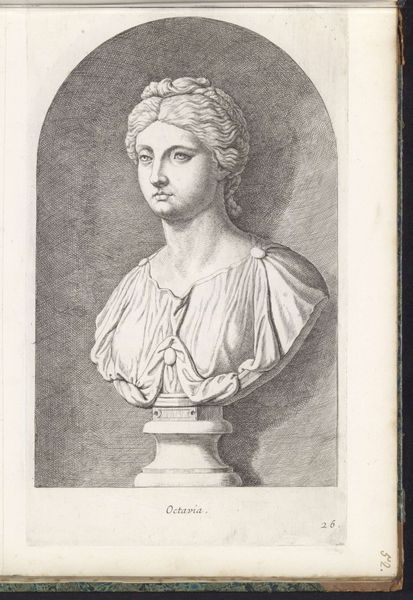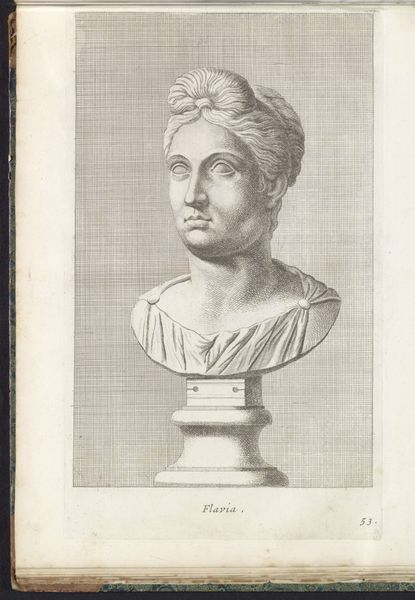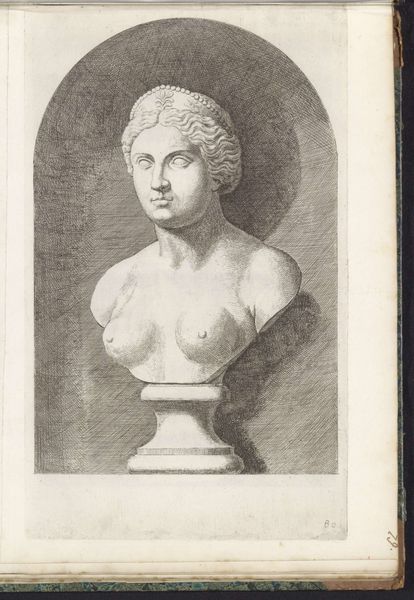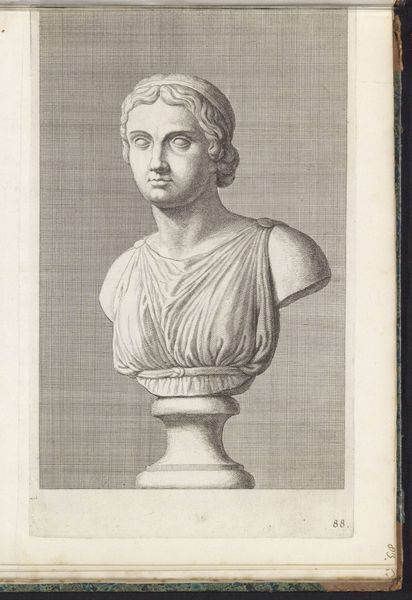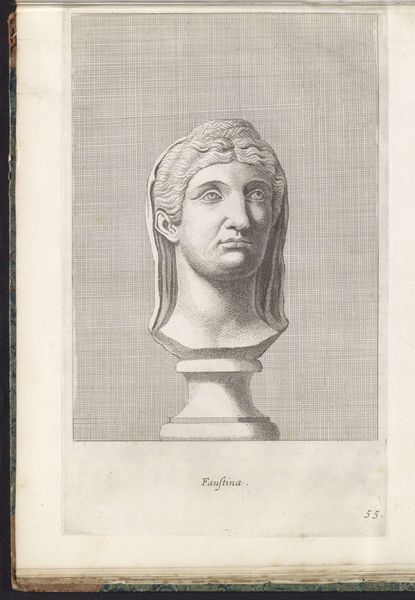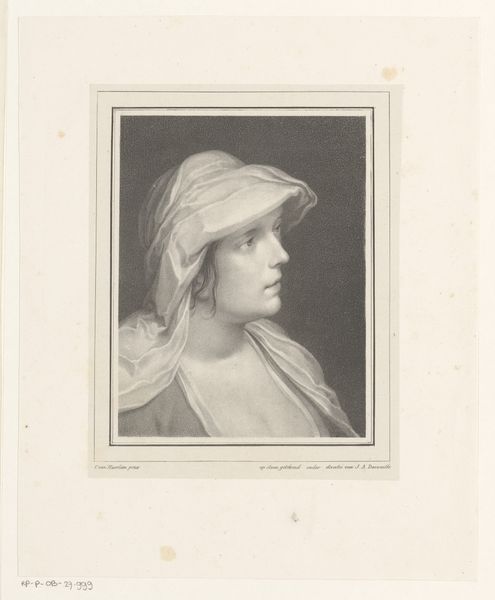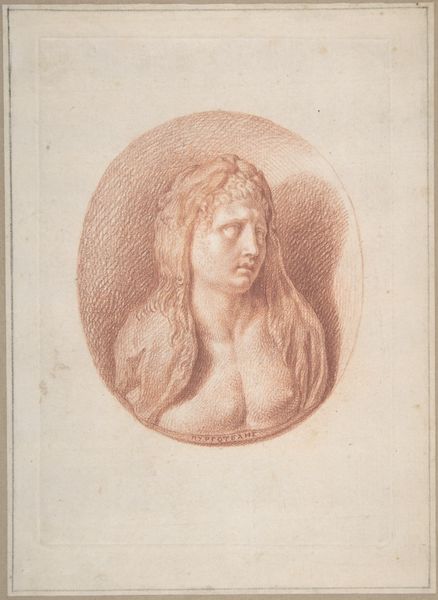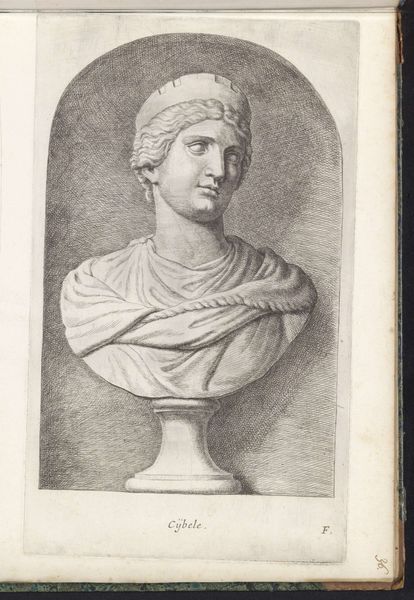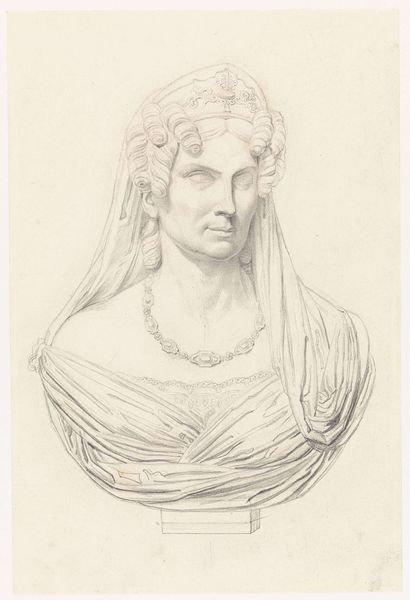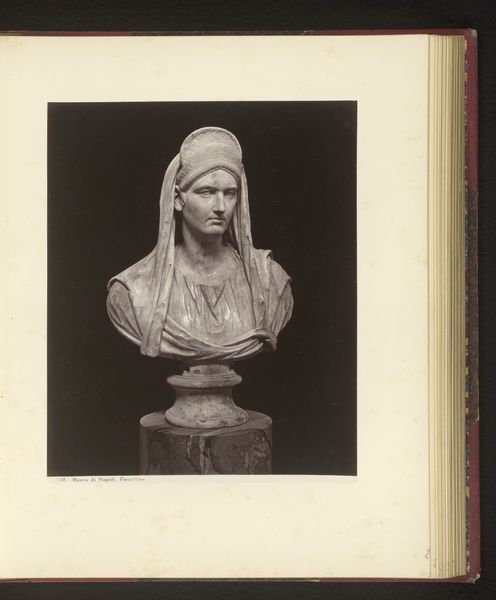
print, engraving
#
pencil drawn
# print
#
greek-and-roman-art
#
classicism
#
portrait drawing
#
history-painting
#
engraving
Dimensions: height 325 mm, width 201 mm
Copyright: Rijks Museum: Open Domain
Editor: This is "Bust of Livia" created between 1646 and 1670 by Hubert Quellinus. It's an engraving. The subject is Livia, wife of Roman Emperor Augustus, right? What strikes me is the coldness in her expression. What can you tell me about it? Curator: Coldness is an interesting reaction! Considering it’s a depiction, and a later interpretation at that, let’s consider the power dynamics at play. Roman women, even empresses, were often portrayed in ways that emphasized virtue and duty, and Livia was a highly influential figure, perceived, often unfairly, to be manipulating things behind the scenes. Do you think the artist might be subtly commenting on that perception through her expression? Editor: That's a thought-provoking interpretation! I hadn't considered the loaded history of how powerful women were perceived, let alone in Roman society. So, the coldness might reflect anxieties about female influence? Curator: Exactly. The artist lived in a patriarchal society grappling with its own notions of female power, and here he's engaging with how that power was projected onto historical figures. Consider also the classicist style. Editor: Yes, there's a deliberate classicism...making her remote, timeless...but also reinforcing certain ideals. The very act of rendering her as a bust almost feels like a way to contain her, doesn't it? To keep her power in check. Curator: Precisely! The artistic choices speak volumes about societal anxieties and the role of women throughout history. What new questions arise for you? Editor: I see the artistic choices, now, as social commentary. Thanks, this really changed my view. Curator: Indeed, this conversation highlights how studying an image involves delving into not only art history but also the intricate interplay of power, gender, and social context, allowing us to recognize the biases embedded within the art itself.
Comments
No comments
Be the first to comment and join the conversation on the ultimate creative platform.

